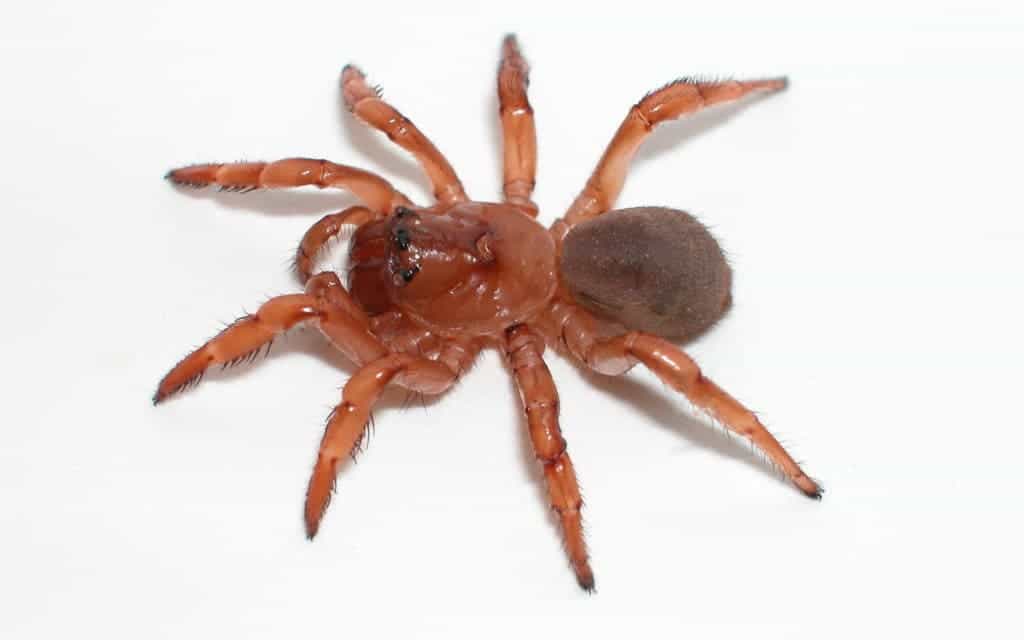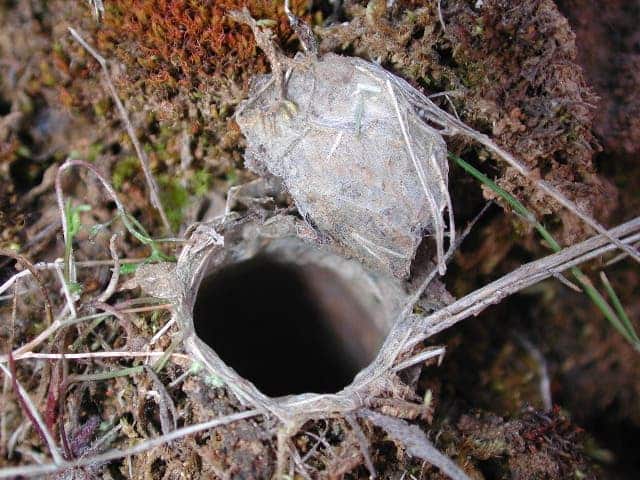Long before human explorers sailed around the world, one spider made an impressive journey from Africa all the way to Australia. Scientists used DNA from this spider and its relatives to infer how it arrived down under. This little explorer actually managed it in the most shocking of ways.
Odd one out
The tree trapdoor spider Moggridgea rainbowi stands out from other spiders in Australia. It’s the only member of its genus on the whole continent; it is found only in the forest of Kangaroo Island, in the South of Australia. All of its other close relatives live in Africa. A study published in PLOS ONE set out to find out how the spider ended up in Australia. There were three likely options. The first was that the species separated when all the continents were joined together as the supercontinent Gondana. Many species were distributed on different continents at that time. The second was that humans brought them from Africa to Australia. The third was that the spiders dispersed to Australia on their own.

To solve the question, the researchers found out when Moggridgea rainbowi became a separate species from the rest of its relatives in Africa. They did so by using modern techniques to estimates when species diverged from each other. DNA was taken from the African Moggridgea spiders as well as the lone Australian one, and from Australian trapdoor spiders. The researchers compared differences between key genes to see how long ago the spider species diverged.
Rafting
It turns out that the Australian Moggridgea separated from the African members between 2 and 16 million years ago. Africa broke off from Gondwana 95 million years so this species did not even exist yet. This is also way before humans explored the globe. These results leave only one option, that the spiders floated to Australia from Africa. Though it sounds pretty crazy, they probably floated on top on a large mound of debris that was eventually swept to the other continent.

This phenomenon is not completely unheard of— called rafting, it involves large pieces or land or vegetation being washed to sea. Reptiles, mammals and other creatures are known to have hitched a ride to islands this way. Trapdoor spiders are usually very stationary, they spend almost their whole lives in their burrows so it seems pretty crazy that they would stray so far from home. But actually, them being so stationary is probably what let them cling onto the debris and survive the long journey. Additionally, they have a very low metabolism and can survive a long time without food. They also have a silk-lined burrow with a trap-door which is a stable habitat for them. They can also resist drowning by “holding their breath” for an extending period of time. All of these characteristics could have helped them survive the long journey across the Indian Sea. Pretty amazing that something so small could survive such a journey.
Journal reference: Harrison SE, Harvey MS, Cooper SJB, Austin AD, Rix MG (2017) Across the Indian Ocean: A remarkable example of trans-oceanic dispersal in an austral mygalomorph spider. PLOS ONE 12(8): e0180139. https://doi.org/10.1371/journal.pone.0180139


